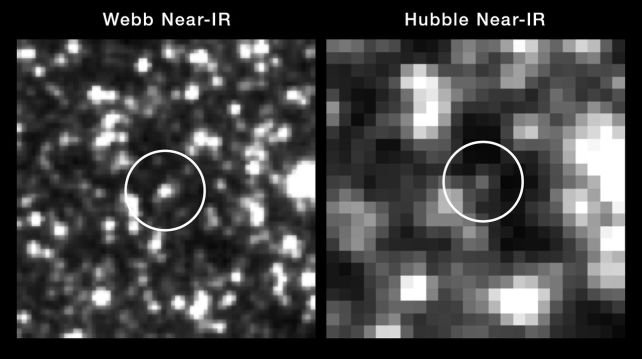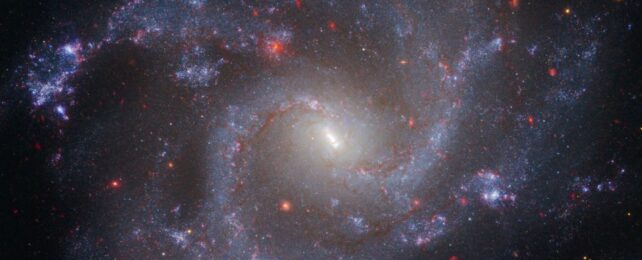A new, precise measurement of the expansion rate of the Universe is in, and it's serving up a huge cosmic pickle.
Using Hubble data and new observations from the James Webb Space Telescope (JWST), a team led by physicist Adam Riess of Johns Hopkins University has confirmed that previous measurements are correct after all, despite years of debate.
Based on immense distances from our Solar System to Cepheid variable stars and Type Ia supernovae, which are used to create a 'cosmic distance ladder', our Universe does indeed appear to be expanding at 73 kilometers per second per megaparsec – a rate known as the Hubble constant.
The problem is that other methods of measuring the Hubble constant return different measurements. Scientists thought that this Hubble 'tension', as it is known, might be a human error. A new measurement with a very high confidence level – 8 sigma – means that something else is the issue.
"With measurement errors negated, what remains is the real and exciting possibility that we have misunderstood the Universe," Riess says.
The Hubble tension is quite probably the biggest problem deviling cosmology, and it has to do with the rate at which the Universe's expansion is accelerating – a fundamental measurement of the Universe. We have several methods of deriving this, but the two main ones are standard candles and standard rulers.
Standard candles are lights in the dark with known intrinsic brightness. That's Cepheid variable stars and Type Ia supernovae. If we know how intrinsically bright something is, we can calculate how far away it is, with high precision. Cepheid variable stars and Type Ia supernovae give us a Hubble constant of around 73 kilometers per second per megaparsec.
Standard rulers are based on signals from the early Universe. These include the cosmic microwave background – the light that first streamed through the Universe about 380,000 years after the Big Bang – and baryon acoustic oscillations, both of which give us a Hubble constant of around 67 km/s/megaparsec.

No matter how many times scientists measure the Hubble constant, they always land on this discrepancy. And it's more than a little blip. The Hubble constant is one of the tools we use to gauge the size and age of the Universe, for example. To better understand the Universe, scientists must find the source of the discrepancy.
Current cosmological models work very well in some respects, so proposed solutions generally mean that something else gets broken. Human error, therefore, becomes an attractive explanation for the Hubble tension, so scientists keep measuring, re-measuring, and measuring again, looking for the place where we stuffed up.
One possibility is that we did something wrong with the original Hubble measurements, so Riess and his colleagues have been using JWST to check their work. Initial measurements made last year were consistent with the Hubble observations; but there was a possibility that, the deeper into space we peered, the more the two sets of measurements could diverge, with the Hubble Cepheid distance measurements becoming less accurate with distance.
Well, now JWST has caught up to Hubble, and that's just not the case. The measurements are all consistent.
"We've now spanned the whole range of what Hubble observed, and we can rule out a measurement error as the cause of the Hubble Tension with very high confidence," Riess says. "Combining Webb and Hubble gives us the best of both worlds. We find that the Hubble measurements remain reliable as we climb farther along the cosmic distance ladder."
So, we have to figure out what it is we don't know. Gravitational wave observations, known as standard sirens, could be key. At the moment the error bars on standard sirens are too big to make a confident ruling, although they do seem to be more or less in agreement with standard candles. There are ongoing efforts to continue to make measurements; we're probably just going to have to be patient.
On the other hand, the new measurements mean we can continue to place our confidence in good old Hubble. What an absolute trouper.
The team's findings have been published in The Astrophysical Journal Letters.
